Genomic diversity of bacteriophages infecting Microbacterium spp
- PMID: 32555720
- PMCID: PMC7302621
- DOI: 10.1371/journal.pone.0234636
Genomic diversity of bacteriophages infecting Microbacterium spp
Abstract
The bacteriophage population is vast, dynamic, old, and genetically diverse. The genomics of phages that infect bacterial hosts in the phylum Actinobacteria show them to not only be diverse but also pervasively mosaic, and replete with genes of unknown function. To further explore this broad group of bacteriophages, we describe here the isolation and genomic characterization of 116 phages that infect Microbacterium spp. Most of the phages are lytic, and can be grouped into twelve clusters according to their overall relatedness; seven of the phages are singletons with no close relatives. Genome sizes vary from 17.3 kbp to 97.7 kbp, and their G+C% content ranges from 51.4% to 71.4%, compared to ~67% for their Microbacterium hosts. The phages were isolated on five different Microbacterium species, but typically do not efficiently infect strains beyond the one on which they were isolated. These Microbacterium phages contain many novel features, including very large viral genes (13.5 kbp) and unusual fusions of structural proteins, including a fusion of VIP2 toxin and a MuF-like protein into a single gene. These phages and their genetic components such as integration systems, recombineering tools, and phage-mediated delivery systems, will be useful resources for advancing Microbacterium genetics.
Conflict of interest statement
The authors have declared that no competing interests exist.
Figures

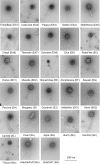
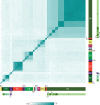
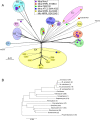









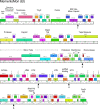








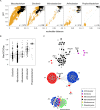
References
Publication types
MeSH terms
Substances
Grants and funding
LinkOut - more resources
Full Text Sources
Molecular Biology Databases
Miscellaneous

